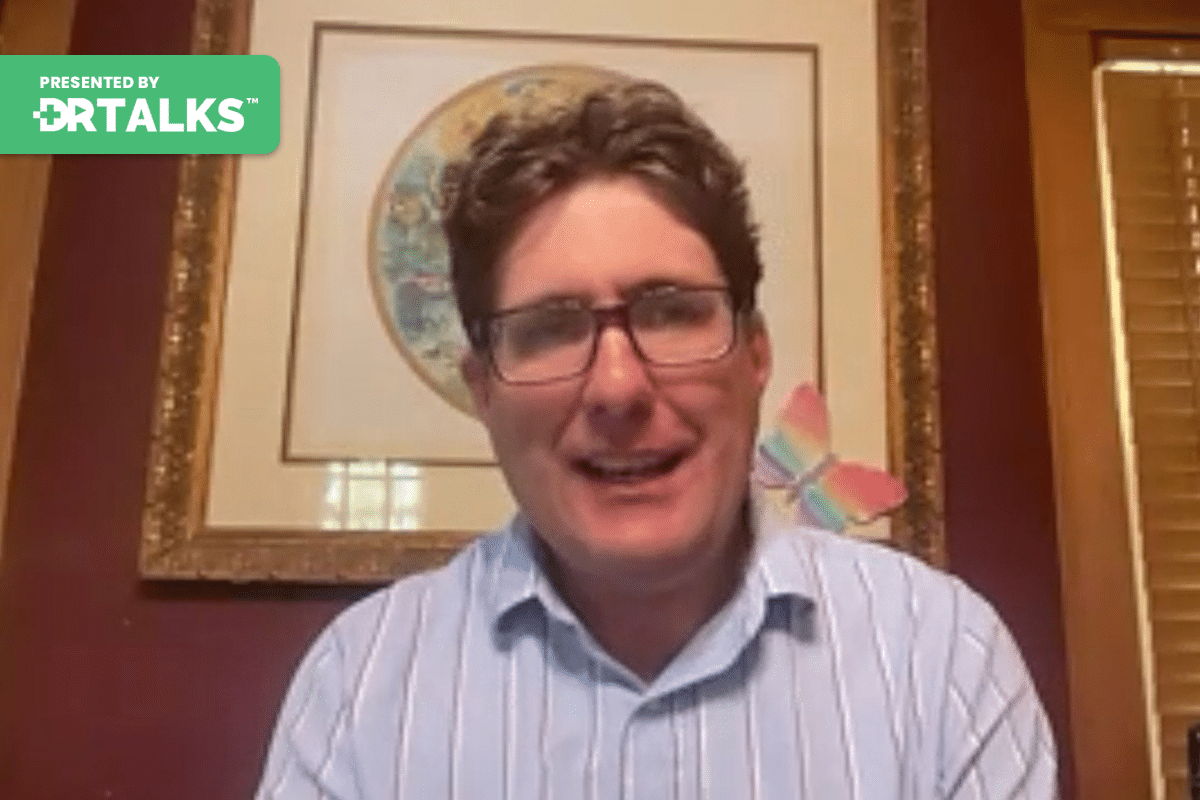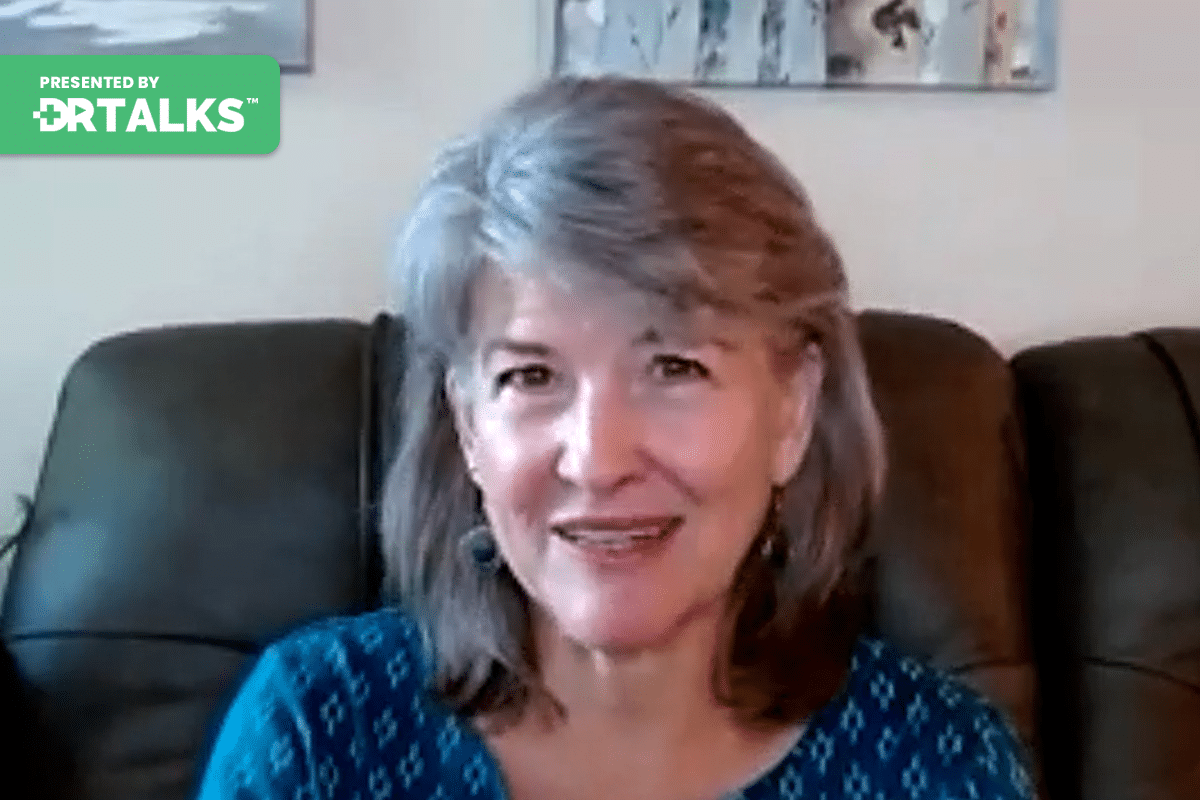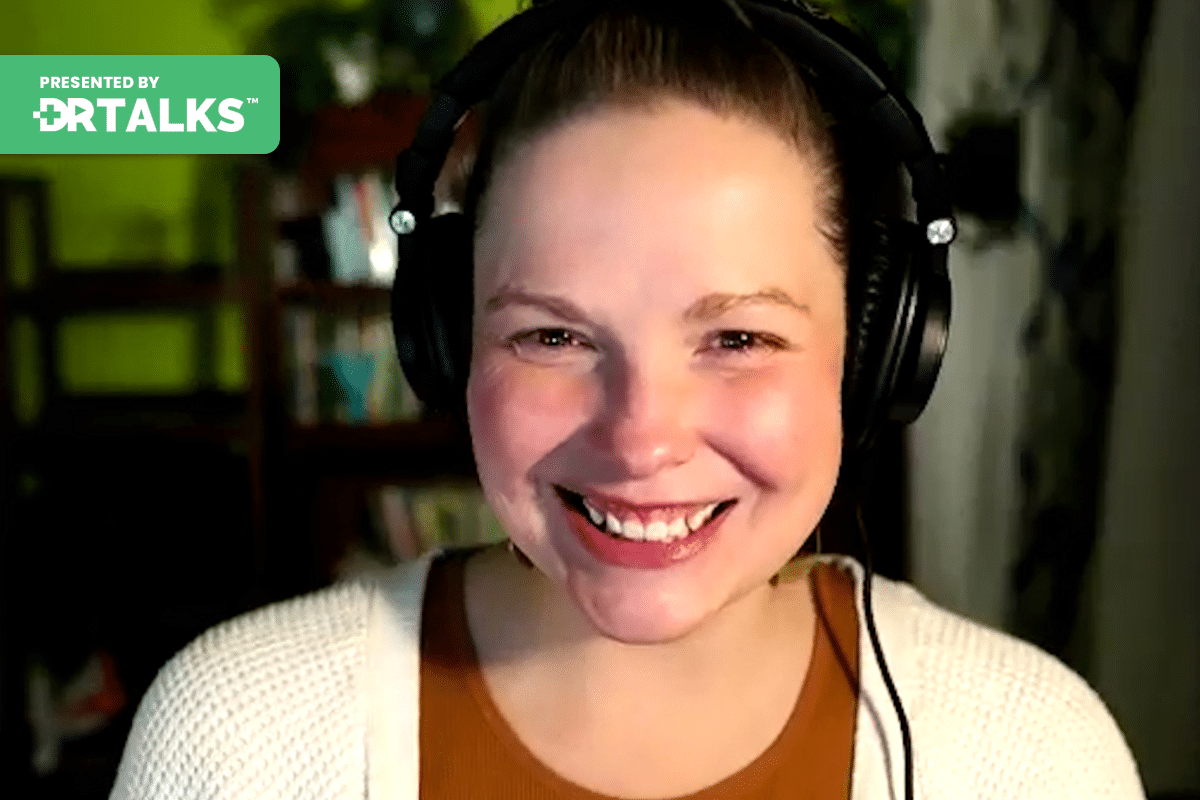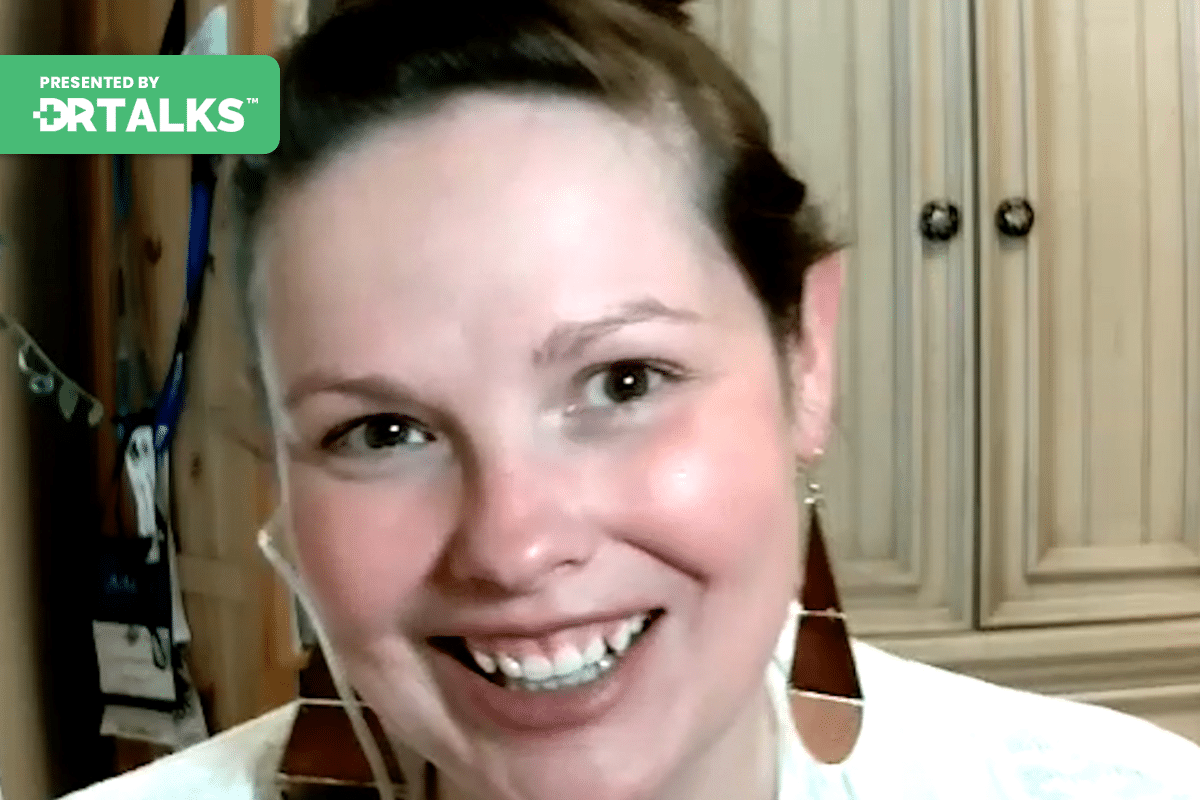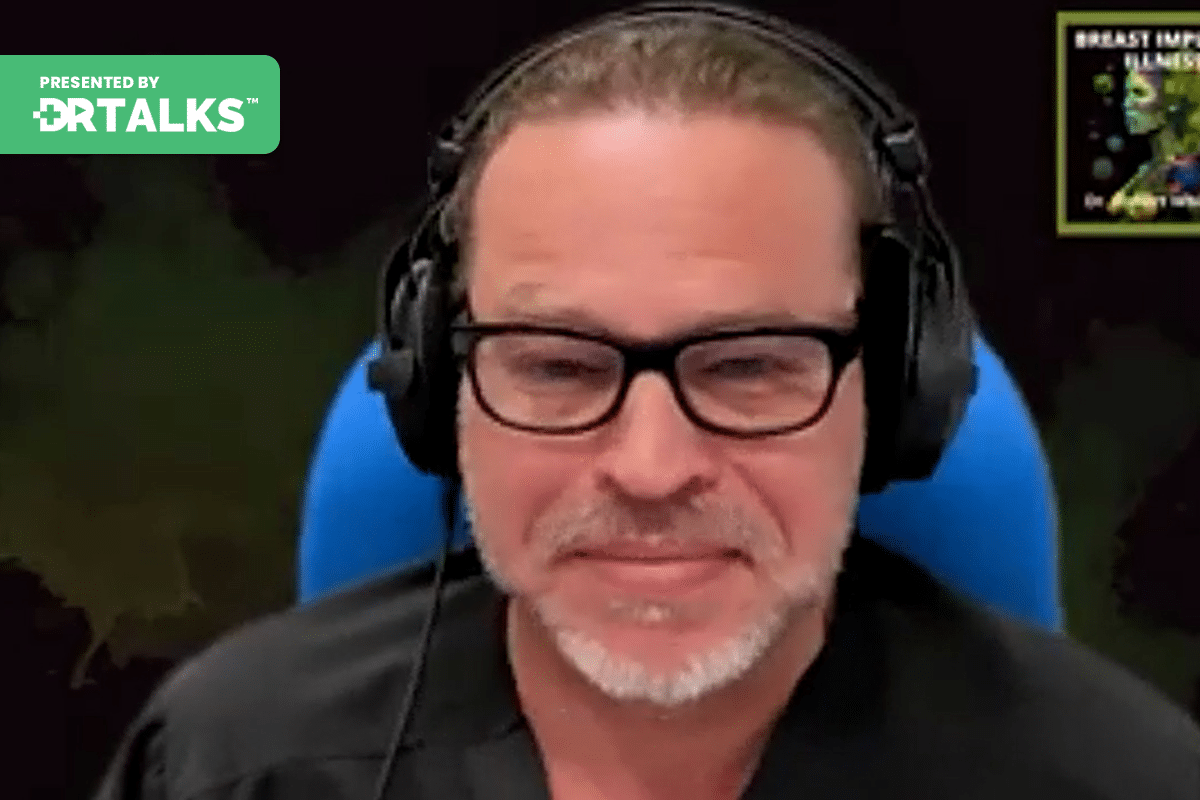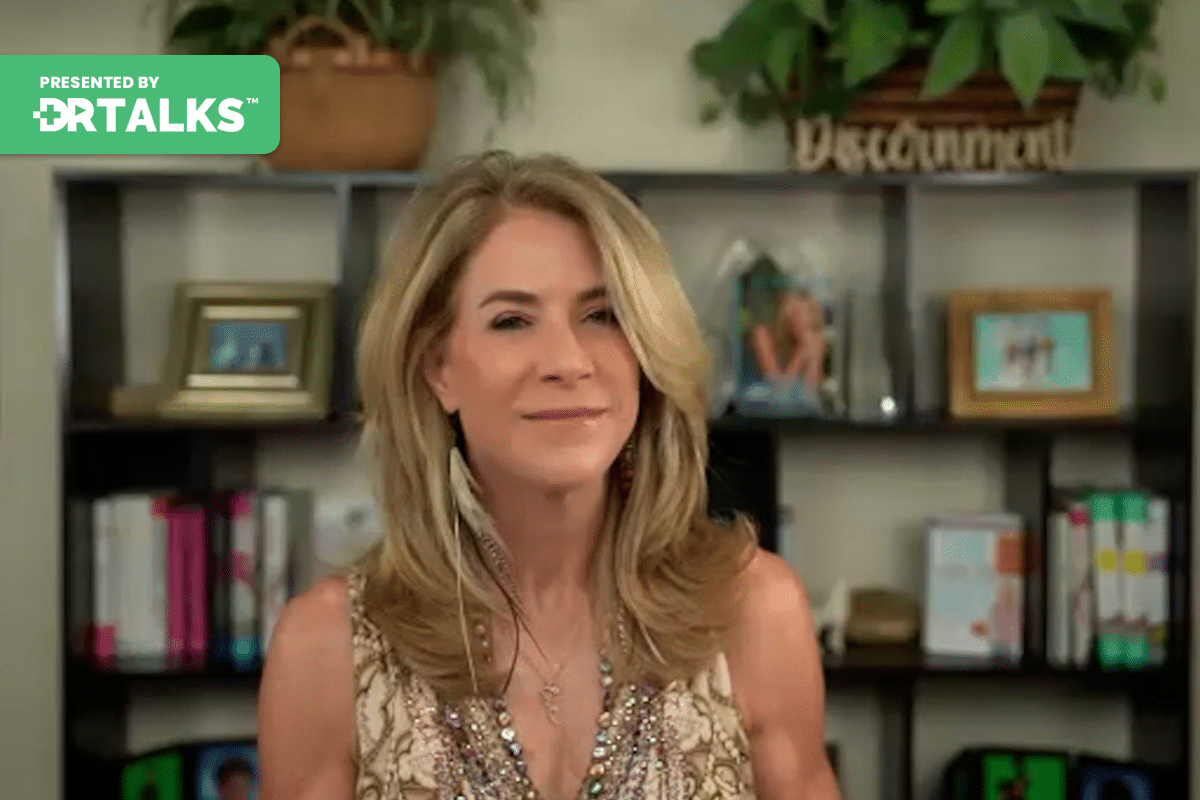Join the discussion below

Dr. Ann Shippy is Board Certified in Internal Medicine and Certified in Functional Medicine. She operates a successful private practice in Austin, TX where she is known for her compassionate, attentive, and tireless approach to caring for her patients. She has gained a considerable reputation for successfully diagnosing and treating... Read More

Dr. Matt Pratt-Hyatt received his PhD in cellular and molecular biology from the University of Michigan. He has over a dozen publications in well-known research journals such as PNAS and Cell Metabolism. He is focused on assisting with diagnosis and treatment of mitochondrial disorders, neurological diseases, chronic immune diseases, and... Read More
- Differentiate between ELISA and LC/MS testing methods for mycotoxins
- Understand what constitutes a safe level of mycotoxins and when to consider testing
- Learn the essentials of testing homes for mycotoxins to ensure a safe living environment
- This video is part of the Mold, Mycotoxin, and Chronic Illness Summit
Related Topics
Annual Screening, Antibodies, Brain Fog, Causation, Cholesterol, Chronic Illness, Diseases, Elevated Amounts, Eliza, False Negatives, Fatigue, Feces, Finances, Glutathione Provocation, Gut Issues, High Challenge, House, Interpretation, Lc-ms, Lipophilic, Modified Mycotoxins, Mold Exposure, Mycotoxins, New House, Pros And Cons, Rapid Development, Rashes, Realtime Laboratory, Sinusitis, Smelly, Testing, Tissues, UrineAnn Shippy, MD
Welcome to Mold, Mycotoxin, and Chronic Illness Summit. I’m your host, Dr. Ann Shippy. Today we got to talk with Dr. Matthew Pratt-Hyatt. He’s got a PhD and cellular and molecular biology. His focus is really on gaining the tools so we can have the insights we need to look at how genes and toxicants interact to cause disease. Thank you so much for joining us.
Matt Pratt-Hyatt, PhD
Well, I’m really happy to be here and I really appreciate you being on here and I mean, you’ve done so many things for a RealTime, like speaking and for the community at large, I mean, you do have as being a practitioner and being a psychologist and disseminating information. I really appreciate you inviting me to be here.
Ann Shippy, MD
Oh, thank you so much. Yes, we’re on a similar mission, aren’t we? Just really helping people to get the information that they need to be healthy. Thanks for being on this mission with me.
Matt Pratt-Hyatt, PhD
No worries. I’m happy to be here.
Ann Shippy, MD
Can’t do without you. You give me so much the data that I need to really understand what’s going on with my patients and to be able to track our progress and all of that. I really am truly grateful that you love to do what you do.
Matt Pratt-Hyatt, PhD
I really do. I mean, I was in academia for so long before doing clinical work. I mean, I did it and I completely, I still have the itch for that. I love doing research and pulling out data. But I really came into clinical work because I felt like I really needed to like help more people and I wanted to make sure that my work was making more of a difference than just like showing up in a text book. I’m happy. I can kind of do both now.
Ann Shippy, MD
Yes. That’s a perfect place for you and for us, too. Let’s dig in, Mycotoxins testing. When should we do it?
Matt Pratt-Hyatt, PhD
That’s a great question. It’s definitely something I hear a lot from, like, new practitioners, especially like ones that I’ve been hearing about all but don’t really, like, know, like if my patient is a good candidate. Fatigue, brain fog, gut issues, rashes, reoccurring like sinusitis. Those are like some of the more common issues that come across, which can definitely be like caused by other things. But a lot of times there’s like the underlying cause is mold exposure.
Ann Shippy, MD
Yes, over and over and over again. When would you not tech for my perspective is kind of where I’ve gotten to. I’m like, well, are there other things I should look at root cause first and there are sometimes times. Sometimes it’s harder to get first. But then I find me sitting, then I’m like, Oh, there’s finally mold.
Matt Pratt-Hyatt, PhD
Yes. Obviously, I try not to, like, tell people like to test for bugs. I feel like I have a biased. I don’t want to, like, say like, “Oh, you should definitely be testing for mold.” Because, obviously that’s what I do. It’s one of the big things. When I first started doing this, I was expecting like maybe like five percent of the patients to have elevated amounts, maybe three, three to was like three to 10. Maybe ten would be like the best. Like it was like 35%, 40% of patients with chronic illness had elevated mycotoxins. It was just like a correlation and didn’t really have a causation. It was like we got rid of the mycotoxins and they got better. It definitely showed that the key was the maker. Like the mycotoxins on a lot of patients.
Ann Shippy, MD
No, honestly, I’m seeing it associated with so many different diseases that I wish we could just make it part of the annual screening. Patients that are going in for preventive medicine that actually check their mycotoxin levels so they can find out if it’s something they need to address before they get sick or if they think it’s just part of the aging process.
Matt Pratt-Hyatt, PhD
Kind of like cholesterol or other things that they realize that they have mold in their house because they’re like, “Oh, my house doesn’t smell moldy.” It’s really it’s only a small subset of molds that actually produce that musty smell. A lot of them like Stachybotrys or Aspergillus don’t produce any smell at all and you’re still getting trichothecenes. “Oh, well, I have a new house and like that doesn’t really matter. Actually buying a new house makes you more susceptible to having mold. It’s problematic.
Ann Shippy, MD
Hopefully you listening are hearing like, okay, I want to test for mycotoxins if you haven’t already and you’d like to know a little bit more about the testing. There are a few different testing modalities out there. Could you explain what they are and what the pros and cons are of each of them?
Matt Pratt-Hyatt, PhD
Yes, and I’ve used both of them and there are pluses and minuses for both. There are two main ones are: a technology called Eliza which is used like antibodies to bind directly to the mycotoxins and the other one is called LC-MS, which is liquid chromatography mass spec. The benefits for Eliza, is you can measure both modified and unmodified mycotoxins. Why is it important for mycotoxins? Mycotoxins more than like a lot of other toxins are actually modified greatly after they come into the body. There’s a lot of different enzymes that will add things on to them like sulfur transfer, and a sulfur group Lutetium Transferase that’s glutathione, Ubiquitination and ubiquitin to it. There’s a lot of like different like markers to these Mycotoxins. It’s important.
Ann Shippy, MD
Is this part of their normal metabolism?
Matt Pratt-Hyatt, PhD
Yes, they’re lipophilic, so that means that they like to bind to tissues so they don’t like to be in liquid and so they don’t come out in urine or in feces very easily without modifications. When you’re measuring them, you have to make sure that you can measure both the modified and unmodified.
Ann Shippy, MD
So, that’s why if sometimes if you run two tests side by side, you’re thinking that you’re going to get the same results. Then you get actually get different results because the mass spec tests can’t pick up the all the toxins because your body might have actually already started to modify them to be able to try to do.
Matt Pratt-Hyatt, PhD
Exactly, yes. If you’re running an Eliza test in a mass spec test side by side, very rarely that you’re going to get the same results. Any time for the mass spec one, you might actually get a lot of negatives where you see positives on the Eliza. That’s the benefits for LC as you can develop a test a lot quicker than the Eliza as it takes a long time to develop those antibodies and sometimes for some mycotoxins it’s really difficult to make an antibody that is specific to that particular mycotoxin because some of these toxins mimic other compounds. When you make an antibody, you want to make sure that it is for specific to that particular mycotoxin. It also gives you a good readout. It’s very sensitive. Sometimes you need to use both tasks together because you have mycotoxins that test for you. You can test for Eliza, but then there’s other ones that you can’t test for Eliza, you want to use LC-MS because that’s really the only one available.
Ann Shippy, MD
That’s actually what I do with most of my patients, unless the finances really aren’t there. We’ll have to look at which mycotoxin we’re most concerned about. Would you like to talk a little bit about them? But so and we haven’t made this clear that the company that you work for is RealTime Laboratory and that would be the Eliza testing which is going to pick up more.
Matt Pratt-Hyatt, PhD
That’s correct. We currently use Eliza testing. We are actually in the process of developing an LC-MS test as well.
Ann Shippy, MD
That’s good news.
Matt Pratt-Hyatt, PhD
There are mycotoxins that we’re not measuring on that we feel are important. We’re hoping.
Ann Shippy, MD
Development time would just be too long to get.
Matt Pratt-Hyatt, PhD
Cards like this out. It’s just like we tried it. We can’t get an antibody that is specific enough to the particular mycotoxin. Part of our lab is we are producing accurate results is the most important thing for us. Profit is always nice, but producing accurate results they’re helping people is in our mission statement for our company.
Ann Shippy, MD
I want to talk a little bit about interpreting the test results, because this is where it’s a little tricky for patients and often for practitioners. For example, one of my patients, that was the sickest when we initially did his mycotoxins test, he tested zero. But I could tell from his symptoms he was in mold. He was living in an old farmhouse. He was so neurotoxic case. And I looked at his glutathione genes, and I was like, “Let’s give you some glutathione and see what happens.” He dumped. The mycotoxins are out. I just want to be cautious about people getting a negative test server looks acceptable and interpreting it. They don’t have a mold test. I know you talked to so many different practitioners and probably have some facts about this that you’d want to share.
Matt Pratt-Hyatt, PhD
I do. Yes. I’ve done a lot of research I’ve worked with a lot of practitioners and I found through my research that maybe about 20% of patients that have a false negative are really false negatives. The way that we’ve tried to avoid that is doing like glutathione provocation. Now this can be tricky. I mean, some patients, when they start taking glutathione get really sick. You had to obviously be working on this with your practitioner.
Ann Shippy, MD
I try to think is I actually find when I do a really high challenge, I do eight teaspoons of it like this glutathione and my normal dose of doing the patients would be like one to two, maybe three teaspoons at that. Yes. But what I find is that those patients tolerate that pretty well. Whereas if when I come and do the like just one teaspoon or half a teaspoon, I’m actually more likely to have people react to it first.
Matt Pratt-Hyatt, PhD
I’m very curious about that. That is interesting.
Ann Shippy, MD
It is interesting. Back when I started doing this, I had it was early in my understanding about using good at I own and treating people. But I my theory is it just gives people so much such a high antioxidant load that whatever increase inflammation they get from doing that additional detox just kind of gets caught with the glutathione.
Matt Pratt-Hyatt, PhD
That’s very possible. It’s interesting by overall response there but so back to the provocation. I say 250 milligrams for five days and then I collect on the sixth day. Generally on the fifth day I recommend like putting ina sauna, exercise, hot shower, something really like it blood flowing through the adipose tissue or the muscles to try to make sure that the glutathione has enough chances to bind up any toxins so that we can release. It doesn’t really matter when you’re doing that first test, I like to get a complete accurate account of whether or not how much mycotoxin do you have. See whether or not your elevated or not? Because I’ll say that no matter how well we do it, 60% of patients go up and I didn’t really recommend retesting at three months and at three month time point I see 60% of patients go from what I call time zero.
It really doesn’t matter how well you propagate Once you start working for a practitioner and they start getting the excretion pathways opened up and get things moving, the values will frequently go up for the first three to maybe sometimes sometimes up to six months. It really really depends on the patient. But I also like to make a lot of patients feel that I’ll be doing a consult of a patient and their doctor and they’re like the new or the doctor’s new and he doesn’t know how. He doesn’t know to warn his patient all this. They’re like both freaked out that the values are higher but the patient feels a lot better like, “Oh, I feel so much better, but my values are like, higher.” That’s fine. It’s not abnormal. I’ve been doing this for like a decade. I see this all the time.
Ann Shippy, MD
Yes, it was interesting because I had a patient that I followed up with today that her levels went up quite a bit and, so it was actually good news that she’s actually able to excrete it better but there can be that I think it’s important to get the serial markers to really make sure. What time frame do you think it’s important to actually start to see them come down to know that there’s not.
Matt Pratt-Hyatt, PhD
After six months, if they’re not coming down, then you have to really, like ask like, am I still early being? Obviously when you a time zero, you really need to be. If those who get elevated, you need to start addressing your living environment too. Testing your house, testing in your workplace wherever you’re spending a lot of time out, if that shows up negative in a six month, you’re still either plateauing or still going up there. Obviously, you need to be worried about colonization. That means that you’ve breathed in the spore and the spores start forming some type of biofilm internal to the body. If from research indicates that biofilm either it is 40 forming in the sinuses or in the gut, those are the two, most common areas. In there l bio botanical as well as pharmaceutical ways of like treating those two populations of mold..
Ann Shippy, MD
Commonly with the immunosuppression that happens from the mycotoxins. It is an important thing.
Matt Pratt-Hyatt, PhD
That’s like Immunosuppression is a big thing. I mean you it’s really hard for the body to fight these mold. Like once it gets colonized, the body really can’t fight it because of the immunosuppression. Also you get to like co-infections with like Clostridia and Candida as well. It’s tough to like figure out if the gut issues are being caused by mold, Candida, Clostridia, that’s the reason why I normally run and note along with the mycotoxins to try and like better guess of like what the complete picture is.
Ann Shippy, MD
Yes, that’s great. Yes. RealTime has the test now too, so that’s great.
Matt Pratt-Hyatt, PhD
Yes, it is. But there’s a big push by me. In order for me to be able to consult with a doctor on their patient, I need to be able to see those results. Say, “Okay, how are the mitochondria doing? What is the power of glutamate? What’s the glutathione levels? What are neurotransmitters doing?” I really need to get a more complete picture to see how do we support this patient, not just pointing out their toxins but supporting other aspects because the mycotoxins affect so many aspects of health. It’s not just pulling the toxins out and the patient’s better. There are times you have to do other things as well.
Ann Shippy, MD
Absolutely. It’s great to have all these tools working together. Do you want to talk about when we’re looking at these test levels and interpreting them like, what are you what are we shooting for? Where do you think of safe level is?
Matt Pratt-Hyatt, PhD
It really depends on the person, to be honest with you. Some people are safer. It really depends on how much they make out? How much glutathione they’re making. That’s one reason why I look at the power of glutamic acid marker, and I really see that in a bimodal state. You either have your patients that if they have mycotoxins, they’re really high that in a lot of recycling of glutathione or they’re close to zero, which means that they either don’t make a lot of glutathione or they’ve used up all stores of glutathione.
Ann Shippy, MD
That happens commonly with these toxic exposures.
Matt Pratt-Hyatt, PhD
It does.
Ann Shippy, MD
Through what they have.
Matt Pratt-Hyatt, PhD
Then I’ll also do an environmental pollutant profile. A lot of times if I see the glutathione, the particle to make zero, I’ll see like other toxins building up as well inside the body. Trying to get that the results. That’s the question.
Ann Shippy, MD
What are we shooting for? When we get to be happy.
Matt Pratt-Hyatt, PhD
Generally I try to shoot for no present. Not present or recall on all the results. That’s generally, you’re not going to hit zero. It’s not with Mycotoxins being in the food supply, with the toxins being it’s small amounts in most homes, you’re not going to hit zero. It’s a fair over 50%. I mean, 50% of our patients are below the present level. I’d say it’s definitely an achievable aspect to hit.
Ann Shippy, MD
I put for you to explain a little bit about why with the trick author’s genes, we’re looking for like a .07 and others, we’re looking for 1.02 so that people understand the potency of the different.
Matt Pratt-Hyatt, PhD
That’s the other great point there. All different mycotoxins have different levels and it really depends on how much of those mycotoxins are normally seen in patients. All in our presence hit the 50th percentile. But trichothecenes are like outlier where in our .07 is the 50th percentile, but mold don’t produce a lot of trichothecenes. The bigger molecules are more complicated. It takes a lot more energy for those molds to make those trichothecenes, but they’re also a lot more potent. That means that they’re all more toxic. It takes a little bit, goes a long way for trichothecenes.
Ann Shippy, MD
Like I’d describe it, like the Ghost Peppers is very much to turn you out.
Matt Pratt-Hyatt, PhD
Yes, it’s definitely. There’s a lot of like analogies and cooking that you don’t really need to look at a lot to cause problems, unfortunately. Trichothecenes are also like hard to diagnose because sometimes the patients they are definitely like the ones I see that come out the last. That’s the other thing that worries some patients is like all the rest of the mycotoxins are going down, but the trichothecenes start going up because they’re too like the most lipophilic of all the mycotoxins. A lot of times they’re the last ones to start coming out of the tissues. Like the glutathione binds to ochratoxins like the gliotoxin, the aflatoxin first. But the Trichothecenes are like dug in deeper and they are the last ones to die. They’re really holding on tight and it takes the body a little bit longer to get them out.
Ann Shippy, MD
That’s interesting too. When you’re doing a glutathione challenge, you don’t get as much of a response. A lot of times with the check out the scenes as you do with some of the others.
Matt Pratt-Hyatt, PhD
You don’t.
Ann Shippy, MD
Okay, Well, this is really great information. Anything else you want to say about testing the body and, tracking progress and what to look for, those are great tips.
Matt Pratt-Hyatt, PhD
Testing time zero important. In every three months, nine months, six to nine months, if you’re not seeing problems, start looking into doing some type of anti-fungal treatments at that point and then I guess the next stage is also making sure that we’re looking at the house.
Ann Shippy, MD
Let’s talk about the house. That’s one of the most important things because it’s hard to get better if you don’t find the source.
Matt Pratt-Hyatt, PhD
I was lucky that I got the idea of a year and a half sabbatical doing home testing and being the scientific advisor for a home testing the remediation company. I went through a lot of houses and I dug, I went to crawl spaces, I dug through attics.
Ann Shippy, MD
I can’t see you doing that. I’m used to seeing you in your suit and tie.
Matt Pratt-Hyatt, PhD
I know. It was interesting. I’m putting on the suit and the hood.
Ann Shippy, MD
Thank goodness you did that but there’s so many experts who can do that..
Matt Pratt-Hyatt, PhD
I squeeze in myself, into some of those attics, some of those attics were a tight squeeze for a six foot three individual.
Ann Shippy, MD
Yes, that’s the other reason. Well thank you for putting the protection on because a lot of inspectors don’t wear the protective garb.
Matt Pratt-Hyatt, PhD
Yes, but yes, so I won’t. But I also I thought it was important to me to be able to learn how to tell people like, what they should be looking for in a home. Okay, there are different testing modalities. You got your air testing that’s important. I’d be able to it’s cheap. You can do it at multiple spots in the house, kind of give you an idea of what is occurring in different parts, where the biggest concentration of mold that in the house. You can also do an outside assessment. You can make a comparison of the outside versus the inside. Then you can do like a test which will give you a DNA assessment of how much mold is in the house, either dead or not or living mold. We do something similar to an army where it’s called the fungal count DX.
It looks at 13 different mold species. They’re the most pathogenic. Then the third thing is doing the mycotoxins, which is actually, I think probably the most important, because a lot of times you get these molds, these molds are going to find themselves in an attic or in a crawlspace or inside a wall, and they’re producing mycotoxins because that’s like breathing to them and these mycotoxins are thousand times smaller than the spores. They’re less sticky than the spores. They’re going to flow freely through the house. There’s a lot of times where I come in, I’m digging through out the whole house. I’ve spent like an hour and a half, 2 hours in the house. I don’t really see a whole lot. I know the inhabitants are sick. I’m getting frustrated because I’m not seeing anything. I do some air testing. They are testing shows a negative. I do an army that comes up negative and I get the mycotoxin results back the next day. Those are sky high. That indicates to me that I need to go back into the house. I’m like, “Okay, we’re going to start looking for where we’re going to cut out some three by three holes in the wall so I can start sticking in cameras and say we need to dig a little bit deeper.”
Ann Shippy, MD
That is such great information. I’d love to hear a couple of your stories about where you found the hidden mold from doing this. If you hadn’t done the mycotoxin test, you might have just said, “Hey, it’s not in the house, it must be someplace else.” But by doing the mycotoxin testing, you actually identified that there was a problem there so that you felt willing to cut the holes and that kind of thing. If you could share some of the success stories with that, that would be amazing.
Matt Pratt-Hyatt, PhD
Yes. I mean, one of these was like a 1980s house family of four little girl is like pretty sick, went throughout the house and I knew that she had done testing through RealTime and I knew that she had high trichothecenes in her in our system. I was like, “Okay, I’m looking for Starkey Stark. He’s not going to show up in an air test because it’s sticky, it’s big. I’m like looking under her bed. I’m like, looking in the closet. I’m like, look in the attic above her room. Throughout the whole house, I just didn’t see it anywhere. But then we did the mycotoxins were pointless. Like we said, put a seven and it was .27. It was almost four times higher than what the cutoff was. This is somewhere else. I was like, “Okay, let me dig, cut a little a couple of holes in there.”
She had a bathroom against one of her. Usually, I’ll do I always do like infrared throughout the house. But the infrared didn’t show anything because they hadn’t run water for like several days on that bathroom. It was dry. I figured out that there was a leak. There was a leaky pipe in there, but you had to be running when I had gone there last, they hadn’t run that sink for several days. There wasn’t any like moisture on the outside of the wall. I saw this sink. I saw the mold growth all around the back of that wall there and had it like I saw it coming through yet. It was a very small leak. It’s like a pinprick leak. It’s just little bitty drops, but enough to increase humidity, gets the mold going in there. I took a tape sample of it so I could send that to the lab. Look at what species it was, because there’s always a lot of things look like tacky. It could be kind of sporial which is not toxic at all. One, I confirm what it was. Yes, it was like hundreds, there’s unmeasurable amount of my Stachybotrys that was like on that tape sample. We had to pretty much remove that almost and that entire wall and then we got rid of all the mycotoxins afterwards. But yeah, that’s one of the instances that I was really thankful for the Environmental Mycotoxins test.
Ann Shippy, MD
That’s such a great story, and especially with Stachy, since it can be such a toxic producer.
Matt Pratt-Hyatt, PhD
Yes.
Ann Shippy, MD
Okay. Well, and, and I love that you gave this example too, because for those of you listening, it helps you to know who to work with. It’s got to be somebody that’s willing to do this additional thoughtfulness investigation until they’ve actually found my answer.
Matt Pratt-Hyatt, PhD
Yes. Do you want to make sure that somebody is not going to just come in there and do three or four air samples and then leave? that’s unfortunately, I see that so often. They’ll come in I’m sorry, cause it’s just in your head. There’s no mycotoxins here, there’s no mold here. You really need somebody that is willing to spend the time and the effort because, it’s your fear, it’s your health, it’s your family’s health. That’s how I looked at it, too. I was always like, these are be my kids. This could be my wife. Yes, this could be my mom. Just making sure that we were going an extra mile, That’s great.
Ann Shippy, MD
I love it that you had this experience, too, because it really ties together all the pieces of what you’re up to now?
Matt Pratt-Hyatt, PhD
Yes, it allows me to see. I understand when I talked to inspectors and remediation. I can say, like, “Hey, these are the things that you need you should be looking for.” Or they talk to me, it’s like, “Hey, could you help us, with our collection methods?” It gives me a little bit of better understand the industry a little bit more because I’ve worked at a lot of doctors, but I hadn’t done the inspection or remediation side of things. I really wanted to understand that side as well.
Ann Shippy, MD
When you walked away from that, what did you, what was your impression of the building industry?
Matt Pratt-Hyatt, PhD
Oh yeah, it’s problematic on multiple different areas. One of the things that frustrated me the most is coming into a situation where there are people that are spent several thousand dollars on remediation house and they did the people before us didn’t do a good job and that always I don’t want to take any more of the money, but we have we also have bills to pay as well. I was like, okay, yeah, we’re going to try to like help you out as much as I can. I dealt with a lot of houses that were one or two years old and I see all the shortcuts that builders make. I deal with a lot of homeowners like, oh, we can’t have mold. Our house is one year old. It doesn’t matter..
Ann Shippy, MD
These are the worst.
Matt Pratt-Hyatt, PhD
I’ve been in so many houses that were six months, one year, two years old, three years old, and huge amount of mold growth. Either they didn’t like flash things properly or they didn’t put it up they didn’t seal up things or they built a house while it was raining. There were all the drywall got where they didn’t allow the time to dry out. So many different things that could occur in the building of the house that could cause problems later.
Ann Shippy, MD
I know RealTime Lab is really trying to offer a lot of help with a lot of different things. One of them is to help people that are doing the testing and need to find a practitioner to work with stuff. A few sure about that. Any other things that RealTime is doing to really help people too.
Matt Pratt-Hyatt, PhD
Yes, I think those are all great. Yes. we are on our website, you can under the patients tab, you can find both a practitioner finder as well as an inspector remedied or finder. Now these are all the practitioners and inspectors that utilize our testing. They understand the mycotoxins are an important part because sometimes you talk to a practitioner and they don’t understand how mold and mycotoxin could like relate to chronic illnesses or you’re dealing with a mold person. They will cut things out, but they won’t do anything to treat the mycotoxins afterwards. Is that really something that they’re like worried about? You want to but also take an account that we’re doing our best to check these private practitioners, mediators, but also do your own due diligence, make sure that these people are giving them good advice because we hear a lot of complaints by somebody, we remove them, but sometimes it takes a while for us to hear those.
Ann Shippy, MD
That’s a good place to start interviewing people.
Matt Pratt-Hyatt, PhD
Yes.
Ann Shippy, MD
Yes.
Matt Pratt-Hyatt, PhD
Other thing that we’re doing a lot we’re doing a lot of research with practitioners is work as well as other academics. It’s important for us to like to figure out what the best treatment modalities are, as well as getting out more research of how mycotoxins could affect different illnesses. That’s the other aspect of that we’re trying to do, like giving cheap tests to practitioners and researchers that are doing clinical research.
Ann Shippy, MD
That’s so important because those studies just don’t get funded other places. Doing that collaboration, I’m super grateful.
Matt Pratt-Hyatt, PhD
Yes, well we do what we can to help. Those are the biggest things that we’re doing. I try to help the community as well, but besides giving the test that we feel are the most useful, obviously we’re trying to expand as much as possible because we know that there’s a lot of tests that can give insight into chronic illness. But we had our like a toxin test for 15 years, but now we’re doing organic assets, we’re doing our environmental pollutants, we’re doing glyphosate, we’re trying to add more tests because we know that other piece to the puzzle and that mold isn’t the only driver of chronic illness.
Ann Shippy, MD
Those of us that don’t detoxify that great or have had big mold exposures, often we’ve had exposures to other things that have built up our barrel and then the molds, just the tipping point.
Matt Pratt-Hyatt, PhD
Yes.
Ann Shippy, MD
It’s fun too, as we’re working on the mold to see these other things come down to.
Matt Pratt-Hyatt, PhD
Yes, definitely. I mean, it all comes down to it. Sometimes it’s not mold, sometimes it’s benzene exposure or sometimes it’s glyphosate exposure or sometimes it’s like phthalates. We want to like, make sure that we’re covering a lot of the different like checkmarks out there. What are we seeing in the community that’s causing like lots of people to show up to the doctor or especially they’re like traditional doctors? They’ve been go into this person for two or three years, not get any better. Now they come to their integrative, functional practitioner and now we can try to solve the underlying causes, which I think is the hallmark of our industry.
Ann Shippy, MD
Well said. I think you have something special for our listeners that want to do a urine mycotoxin test.
Matt Pratt-Hyatt, PhD
Yes, we have a discount here for your patients. It’s going to be drt50 be able to like utilize that to get a discount for $50 off a clinical mycotoxin test.
Ann Shippy, MD
That’s really helpful. That’s great. If people have been hesitant to go ahead and invest in that, that’s a great place to start.
Matt Pratt-Hyatt, PhD
Yes. generally our test is 399 so that you can get for 349, we don’t offer a lot discounts. This is one of the few ways that practitioner or a patient can order our test and get a discount.
Ann Shippy, MD
That’s very much appreciated. Thank you so much on that. It’s just such a delight to see all these things that you’re bringing together with RealTime lab to really help people get better, get to the root cause and get better and and follow their treatment progress. Thanks so much for bringing your brilliance and your big heart and all your experience to a really special place.
Matt Pratt-Hyatt, PhD
Well, thank you very much. I was happy to be here and I really appreciate your time.
Ann Shippy, MD
I appreciate yours. Thanks so much. I look forward to more collaborations and really helping you with the research, too.
Matt Pratt-Hyatt, PhD
Oh, definitely know. I look forward to it.
Ann Shippy, MD
Thank you so much.
Downloads

